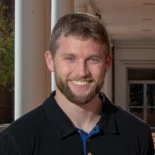ACL Rehabilitation: Motor Learning Strategies for Adaptive
Neuroplasticity (Recorded Webinar)
Presented by Dustin Grooms

12-Month Subscription
Unlimited access to:
- Thousands of CE Courses
- Patient Education
- Home Exercise Program
- And more
Nonfinancial: Dustin Grooms has no competing nonfinancial interests or relationships with regard to the content presented in this course.
This course is a recording of a previously hosted live webinar event. Polling and question submission features are not available for this recording. Format and structure may differ from those of standard MedBridge courses.
This webinar will provide an overview of how the brain changes after ACL injury and how clinicians can address those changes to improve their patient outcomes. While the purpose of rehabilitation is ultimately to restore or enable optimal movement capacity, typical rehabilitation focuses on physical capacity (strength, range of motion) and not the transition of those attributes to coordinated movement under a variety of conditions. The missing links are the utilization of best practices in motor learning to improve retention, and transfer of movement coordination strategies to sport. This webinar will provide theoretical and applicable foundations for the design of augmented rehabilitation that both targets physical capacity and prepares patients for the movement coordination demands of sport.
Learning Objectives
- Link the neuroplasticity after ACL injury with sensorimotor compensations
- Apply motor learning principles
- Examine patient motor coordination retention and transfer
- Create augmented therapy approaches that integrate motor learning and cognitive principles
Meet your instructor

Dustin Grooms
Dustin Grooms, PhD, ATC, CSCS, is a professor in the Division of Physical Therapy at Ohio University specializing in orthopedics and neuroscience. Dr. Grooms received his doctorate from the Ohio State University in health and rehabilitation sciences in 2015, with a focus on neuroscience and biomechanics. Before pursuing…
Chapters & learning objectives

1. Neuroplasticity After ACL Injury
In this chapter, we will present evidence on brain changes after ACL injury, discuss how a noncontact injury is a nervous-system error, and review the associated compensations in the nervous system to maintain function.

2. Motor Learning Theories and Applications
In this chapter, we will provide an overview of motor learning history, theories, and applications. We will also discuss testing and assessment of motor learning.

3. Neuroplastic-Optimized Therapies
In this chapter, we will present evidence of applied motor learning principles to rehabilitation and discuss their theoretical connections to therapy.

4. Question and Answer Session
This chapter is a viewer-submitted question and answer session, facilitated by Dustin Grooms and Phil Plisky.
More courses in this series

Leveraging Measurement to Inform Athlete Readiness in ACL Rehab (Recorded Webinar)
Robert J. Butler

ACL Hot Topics: Knee Extension ROM and Open-Chain Strengthening (Recorded Webinar)
Kyle Matsel and Phil Plisky

ACL Rehabilitation: Motor Learning Strategies for Adaptive Neuroplasticity (Recorded Webinar)
Dustin Grooms

How to Test and Train Psychological Readiness to Return to Sport (Recorded Webinar)
Clare Ardern

A Comprehensive Approach to the Use of Blood Flow Restriction in ACL Rehab (Recorded Webinar)
Johnny Owens